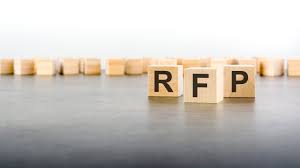In the dynamic landscape of business procurement, Request for Proposal (RFP) processes often consume an enormous amount of time and resources. RFP automation has emerged as a transformative solution, enabling companies to streamline these processes while enhancing precision and efficiency. With a myriad of benefits, such as improving response times and optimizing internal workflows, automation is revolutionizing how businesses engage with potential vendors and manage procurement tasks. Exploring the available options for RFP Automation allows organizations to remain competitive and responsive in an evolving market. Below, we delve into various aspects of RFP automation to understand its substantial role in contemporary business operations.
Understanding the Role of RFP Automation in Streamlining Procurement Processes

At its core, RFP automation simplifies the multifaceted steps involved in procuring goods and services by instituting software tools that manage the intricate details of RFP creation, distribution, and evaluation. Gone are the days of manually sifting through piles of vendor proposals. Automation introduces precision and uniformity, minimizing the scope for human error and bias in the selection process. Critical decisions become data-driven, rooted in a systematic approach that evaluates each proposal on a level playing field.
Organizations leveraging RFP automation benefit from significant time savings, where custom templates and pre-populated fields eliminate repetitive inputs. Automated workflows orchestrate the progression of each RFP, ensuring that no step is overlooked and deadlines are met. Notably, this transformation extends beyond mere efficiency; it carves out more time for strategic thinking and informed decision-making by procuring teams.
Moreover, tracking and reporting features provide real-time insights into proposal statuses and vendor interactions. Such transparency fortifies accountability within procurement teams and offers a clearer perspective for stakeholders interested in the process’s outcomes. Seamless communication channels within the software encourage collaboration among team members, ensuring a cohesive and well-informed unit.
Safeguarding sensitive information becomes a primary concern with any automated system. RFP automation solutions address this through robust security protocols, safeguarding critical business data. From access control to audit trails, these systems ensure that only authorized personnel handle proprietary information, upholding integrity throughout the procurement cycle.
Comparing Top RFP Automation Software: Features and User Experiences
The market offers an extensive range of RFP automation software, each with its unique capabilities and interfaces. Top-tier solutions typically feature intuitive dashboards, collaborative tools, and expansive integrations with other enterprise systems. These features are designed to accommodate the diverse needs of businesses across sectors, providing adaptability and user-centricity.
When examining user experiences, ease of use emerges as a critical factor influencing adoption. Software that boasts a gentle learning curve and responsive customer support tends to score highly among users. Businesses often favor platforms that incorporate customizable templates and analytics, allowing for a tailored approach to analyzing vendor data.
Comparative analyses often reveal insights about how each software scales with growing business needs. Scalability ensures that the software remains a valuable asset as the company expands its operations and faces more complex RFP requirements. Vendors who maintain a commitment to continuous improvement and feature updates help future-proof their software offerings.
Considering the intricate nature of RFP processes, the integration capacities of software play a pivotal role. Solutions that seamlessly blend with CRM systems, project management tools, and other core software assets enhance operational coherence and avoid data silos. This synergy positions automation tools as indispensable components within the technological ecosystem of modern organizations.
Custom RFP Automation Solutions: Building In-House vs. Outsourcing
Deciding between developing a custom RFP automation solution internally or opting for an outsourced product can pose a complex dilemma for organizations. Building in-house grants a heightened level of customization and control, ensuring the end product aligns precisely with company-specific processes and idiosyncrasies. It caters to bespoke requirements that off-the-shelf software may not fully address.
Yet, embarking on an in-house project demands substantial investment in terms of time, capital, and technical expertise. Companies must be prepared to maintain the solution, which includes managing updates and troubleshooting. This can lead to significant ongoing costs and may divert focus from core business activities.
Altogether, the evolution of RFP automation software is paving the way for more efficient and effective procurement processes. Organizations well-prepared to navigate the challenges of implementation and integration will realize the substantial benefits automation offers. Overall, RFP automation stands as a testament to the power of innovation in optimizing traditional business activities.















